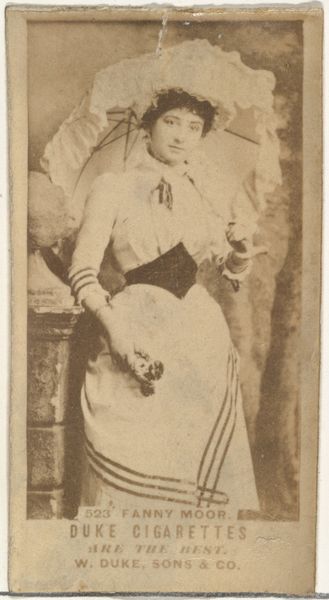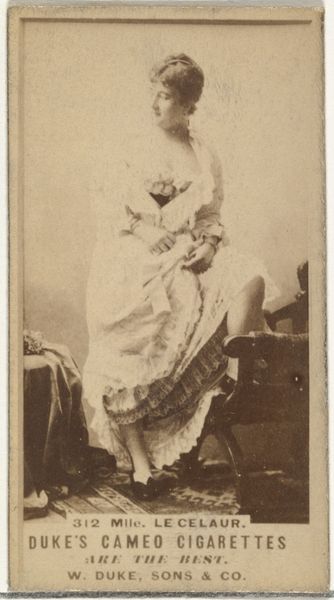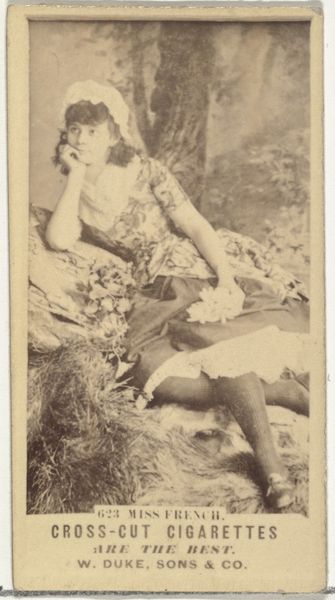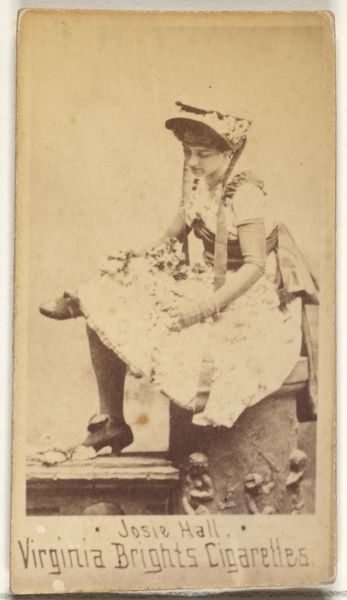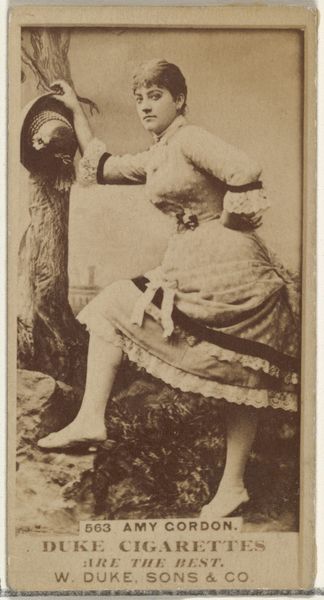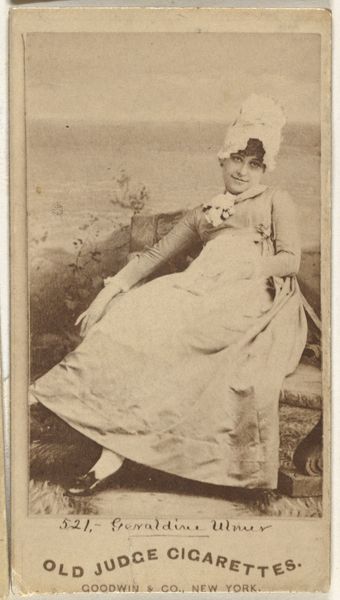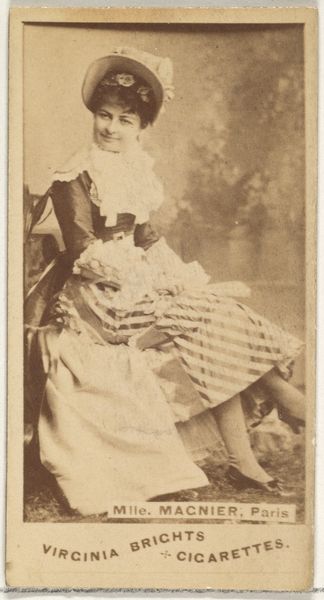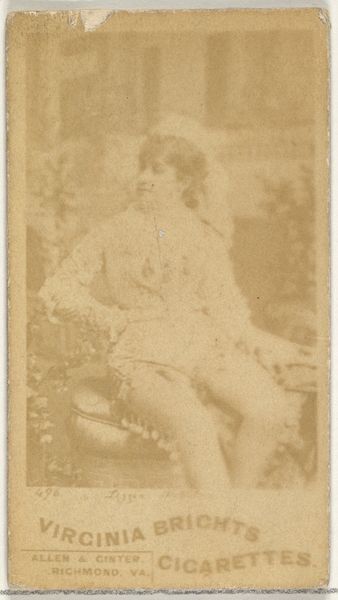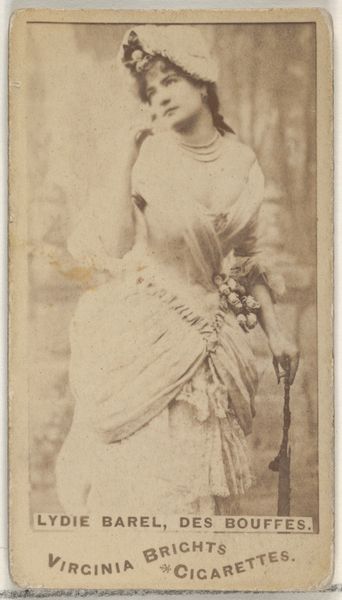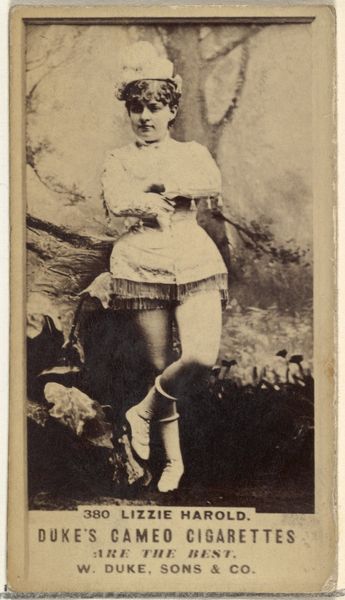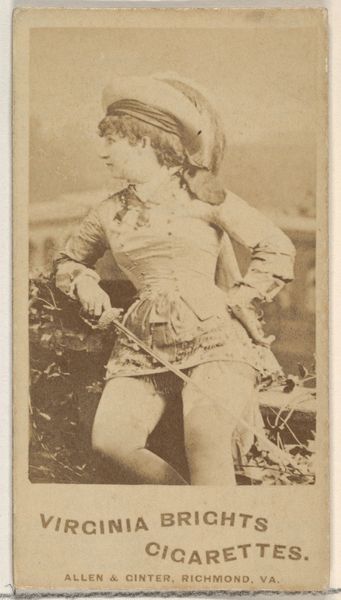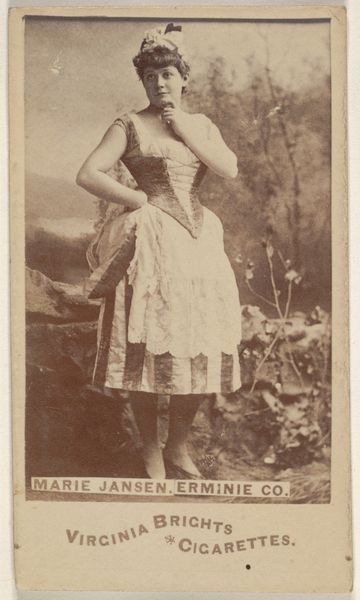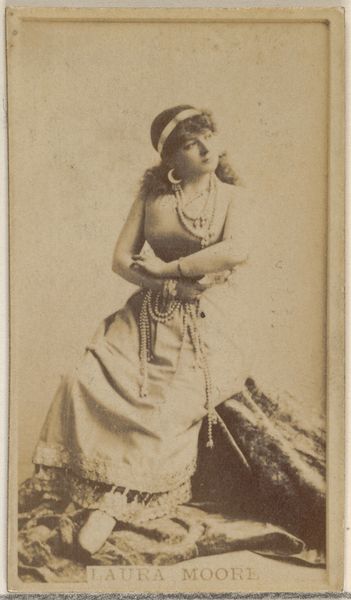
Mlle. Raschel, from the Actresses series (N203) issued by Wm. S. Kimball & Co. 1889
0:00
0:00
drawing, print, photography
#
portrait
#
drawing
# print
#
photography
#
pencil drawing
#
post-impressionism
Dimensions: Sheet: 2 5/8 × 1 3/8 in. (6.6 × 3.5 cm)
Copyright: Public Domain
Curator: Let's take a closer look at this card featuring Mlle. Raschel, dating from 1889. It's from the Actresses series (N203) issued by Wm. S. Kimball & Co. These were often included in cigarette packs. Editor: It feels posed, almost melancholic. The soft sepia tones and her languid posture create this mood of gentle introspection. What do you make of it? Curator: Absolutely posed, but strategically so. Kimball & Co. used these images to promote their brand, tapping into the popularity of actresses at the time. It's fascinating how celebrity culture was already being leveraged commercially. Editor: So she’s not necessarily an artist asserting her identity, but being used as a commodity? The setting—some kind of faux-ruin, the vague costume – everything is constructed to project an image. Is it one of power, or allure, or is it merely decorative? Curator: I think it's about allure, definitely. Actresses were figures of public fascination, often viewed with a mixture of admiration and suspicion. Putting her likeness on a cigarette card associates their product with this aura of glamour, but also with a hint of the forbidden. Editor: Forbidden indeed, with cigarettes killing so many women even now. How aware was Raschel herself of how she was being used, and who consumed these images? Were they only meant for men? Curator: That’s where it gets really interesting. These cards were traded and collected widely. While the primary market for cigarettes was likely male, the collecting craze reached across social classes and potentially genders. The actresses themselves were gaining recognition through this kind of distribution. It was a form of publicity, albeit one controlled by the company. Editor: So in a way, she’s complicit in her commodification, furthering it through her public presence, but in turn benefiting from the exposure, gaining economic leverage... What about how these actresses challenged social conventions and expectations, what stories did they allow audiences to project on them? Curator: Precisely! This card is not simply an advertisement. It also served as a small window into a world of theatrical performance, celebrity, and visual culture. It reflects the complex dynamics of the era. Editor: That’s the great trick of images that at first seem simple, isn't it? They can reveal such tangled layers of societal forces and power relations, making us think critically about the seemingly mundane things we see. Curator: Absolutely. Analyzing the cultural context of even seemingly simple promotional items gives a surprisingly deep dive into a past reality, shedding light on commerce, identity, and the dawn of mass media.
Comments
No comments
Be the first to comment and join the conversation on the ultimate creative platform.
